21 - She/Her - The oft-chaotic thoughts, opinions, and outburts of a melancholy natural historian and monster fanatic.
Don't wanna be here? Send us removal request.
Photo



Arsinoitherium skeleton at the Natural History Museum London
Dugongs and manatees might be its closest living relatives
201 notes
·
View notes
Text
Pros and Cons of Bipedalism
Pros:
One of the most efficient gaits of the animal kingdom
Can carry and use tools while walking
Less area for sun exposure back in Africa (top of the head vs whole back)
Can carry our young since their stupid tiny hands can’t cling to us anymore like proper primates
Taller: see predators coming, pick fruit from trees, give better high-fives
Look scarier to other animals
Cons:
Back hurty
BIRTH HURTY x100
Knees: “I didn’t sign up for this.”
Heart: “I didn’t sign up for this.”
our circulatory system has to work so hard bro
Big tiger can see us better
Did I mention how much birth hurts bc of our stupid upright hips? Seriously, commonly dying in childbirth isn’t an evolutionary benefit smh
Anyway, I would like to hold a re-vote on walking upright, who’s game?
71K notes
·
View notes
Photo






Some more recent commission work for PBS Eons!
The entelodonts Eoentelodon and Brachyhyops, from “The Hellacious Lives of the Hell Pigs” https://www.youtube.com/watch?v=trJpxwMGoCw
The early ichthyosaur Tholodus and the mosasaur Pluridens, from “When Ichthyosaurs Led a Revolution in the Seas” https://www.youtube.com/watch?v=V342aXQs9XY
The early bats Onychonycteris and Icaronycteris, from “When Bats Took Flight” https://www.youtube.com/watch?v=zWeYCULC0UQ
———
Tumblr | Pillowfort | Twitter | Patreon
257 notes
·
View notes
Photo

A friend kept coming to me with her friends’ favorite dinosaurs and I kept having to be like “About that”
So here you go: A chart of Dinosaurs and Not-Dinosaurs, complete with helpful colored boxes and pictures, for when you need to Explain a Thing. Thanks to Phylo-Pic for the images!
1K notes
·
View notes
Text
I’d go so far as to say that outdated restorations like Czerkas’ scaly Deinonychus are necessary in museum exhibits. All museums could do a better job of showing and explaining how and why our ideas about extinct life have changed. Without doing so it gives a lot of laypeople the impression that paleontologists are just making it up as they go and don’t really know what they’re doing. Recognizing and explaining our mistakes and showing them alongside modern restorations is the best way to get the public to understand that paleontology isn’t just a static pool of facts that we change on a whim.

*cries in paleontology* make it stop.
13K notes
·
View notes
Photo

I’ve always loved how this Pteranodon is literally inches from smacking into the Stegosaurus’ plates. It even looks like its pulling up to avoid it.
Art by Rudolph Freund
#dinosaurs#paleoart#prehistoric#mesozoic#stegosaurus#tyrannosaurus#allosaurus#compsognathus#pteranodon#pterosaur#vintage#black and white
1 note
·
View note
Text
A lady on facebook was afraid her kid had lice but together we identified what she found as a canine louse! For reference, these are the only three lice that can survive on human blood:

Any significant deviation from these shapes usually means a non-human louse! This is the canine one:

You can see how it doesn’t really match the outline of the human head or body louse. Even if it lays eggs on a human, the blood won’t be adequate for the babies to grow on!
310 notes
·
View notes
Photo

The giant ostracod may look like a swimming orange ping-pong ball, but it’s actually a shrimp-like animal that swims by rowing its long, feathery antennae!

Ostracods are a class of crustaceans, sometimes known as seed shrimp. The deep-sea giant ostracod, Gigantocypris, is 30 times bigger than regular ostracods. Its body resembles a shrimp but is completely encased within a clamshell-like carapace. It lives in the midwater and is nearly neutrally buoyant. It swims by rowing its long, feathery antennae, which are also used for feeding. Its eyes are enormous and shaped like parabolic mirrors to help spot bioluminescent prey in the dark ocean depths. It broods its embryos inside the carapace until they are quite large and well-developed.
youtube
1K notes
·
View notes
Photo

Planetetherium is a relative of colugos from the Paleocene of Montana
86 notes
·
View notes
Text
Titanis walleri
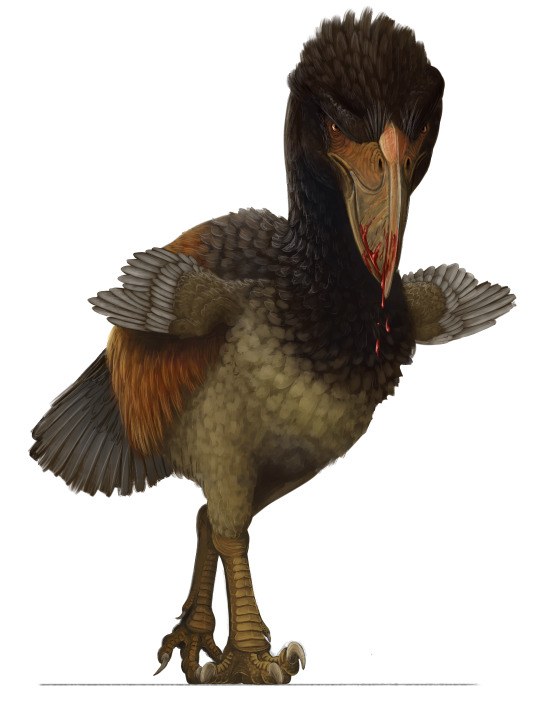
By Scott Reid
Etymology: Titan
First Described By: Brodkorb, 1963
Classification: Dinosauromorpha, Dinosauriformes, Dracohors, Dinosauria, Saurischia, Eusaurischia, Theropoda, Neotheropoda, Averostra, Tetanurae, Orionides, Avetheropoda, Coelurosauria, Tyrannoraptora, Maniraptoromorpha, Maniraptoriformes, Maniraptora, Pennaraptora, Paraves, Eumaniraptora, Averaptora, Avialae, Euavialae, Avebrevicauda, Pygostaylia, Ornithothoraces, Euornithes, Ornithuromorpha, Ornithurae, Neornithes, Neognathae, Neoaves, Inopinaves, Telluraves, Australaves, Cariamiformes, Phorusrhacoidea, Phorusrhacidae, Phorusrhacinae
Status: Extinct
Time and Place: Between 5 and 1.8 million years ago, from the Zanclean to the Gelasian ages of the Pliocene through Pleistocene

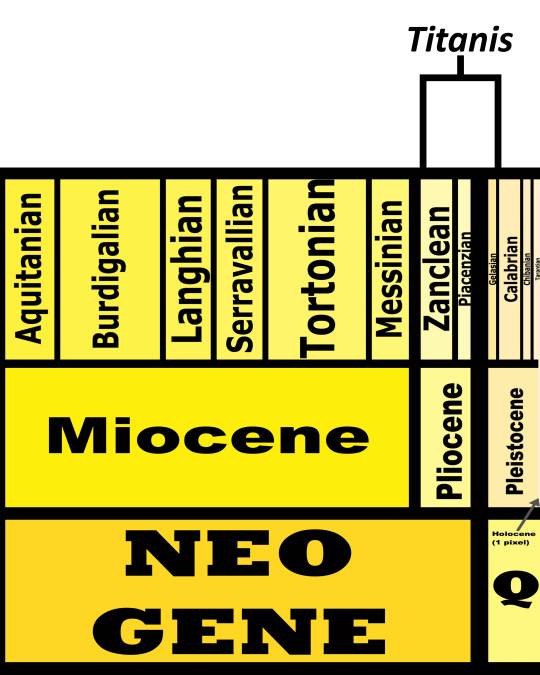
Titanis is known from the Santa Fe River and Nueces River Formations of Florida and Texas

Physical Description: Titanis was a Terror Bird, one of the largest known Terror Birds, a group of large flightless predatory birds that terrorized the Americas during the Cenozoic Era, right up until humans would have appeared on the scene. Titanis is one of the latest members of this group, and the one that made the journey up to North America - most Terror Birds are from South America. It would have been 2.5 meters tall - much taller than a person - and would have weighed 150 kilograms. There was a lot of variance in size and height, however, indicating that Titanis may have had at least some sexual dimorphism. It had a short tail and round body, with long and powerful legs. In fact, it also had very robust toes - and one of the strongest middle toes known for a Terror Bird. It had very small, useless wings, that were very much locked in against the body - they didn’t have a lot of folding power compared to other birds. This indicates the wings really were… useless. They didn’t use them for raptor prey restraint or anything else, making them distinctly different from the Dromaeosaurids of long past. Titanis had a very thick neck, which would have supported a large head with a very impressive and terrifying hooked bill - complete with extensive crunching power!

By Dmitry Bogdanov, CC BY-SA 3.0
Diet: As a Terror Bird, Titanis primarily ate large mammals - and some medium and small sized mammals, of course, but basically it was able to cronch anything around it.
Behavior: Terror Birds are most closely related to modern Seriemas, and so a lot of their behavior has been guessed based on Seriemas today. As such - and given that it didn’t have much in the way of wings - Titanis probably mainly relied on its feet in kicking its prey to death. It would chase its food down, kick it, and potentially pin it down. Then, final death blows would have been delivered with the powerful cronch of its beak, though of course the hook on the beak would have allowed increased tearing and shredding. While modern Seriemas are solitary, it is possible that Titanis and other Terror Birds may have used groups to take down larger prey, though they probably would have been more groups of convenience than formal packs. It is possible they had similar breeding habits to living Seriemas, but even that is a question - their larger size, different niche, and general different time periods would provide large differences. And we don’t even know the actual breeding habits of Seriemas very well! So, that being said, Titanis would have probably been fairly territorial over their nests, and both parents were probably involved in the care of the nest and then the young, even after fledging. The young would follow the parents around until reaching maturity. As such, it’s possible that the parents may have hunted for the young, and brought food back for them until they were old enough to hunt for themselves. Then, upon leaving the parents, they probably would have been fairly solitary until finding a mate of their own.
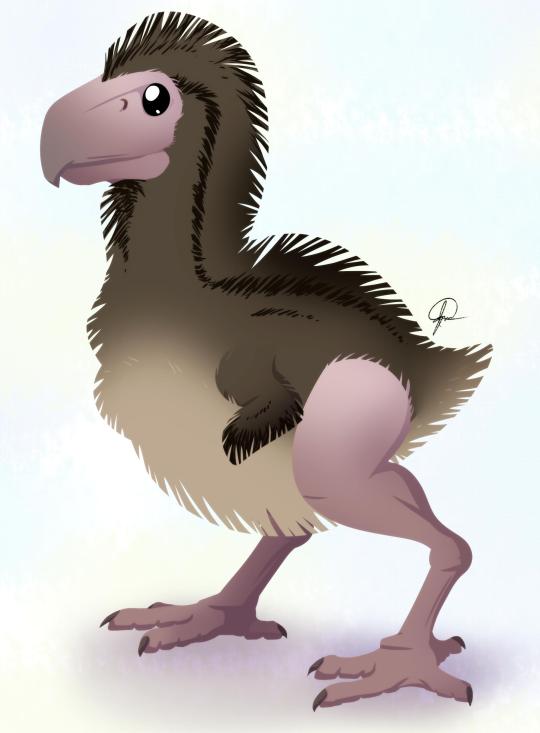
By José Carlos Cortés
Ecosystem: Titanis primarily lived in open grassland habitats in the southern parts of the United States, clearly extending from Texas through to Florida and probably found all over that range. It stuck to warmer, probably wetter habitats, though the exact environments it lived in aren’t very well studied in terms of general flora. Fauna, however, is well known. Titanis lived alongside a wide variety of other animals - in Citrus County, it was found with a variety of frogs, turtles, lizards, rabbits, horses, shrews, bears, dogs, mustelids, and cats (including Smilodon), armadillos, sloths, the Mastodon, cows, peccaries, camels, and deer. There were, of course, many dinosaurs as well - in addition to Titanis, there were waders (indicating a non-insignificant amount of water in this ecosystem, possible coastline, swamps, or lakes), vultures, pheasants, ducks, falcons, owls, pigeons (including the passenger pigeon), woodpeckers, blackbirds, corvids, sparrows, finches, flycatchers, cardinals, rails, grebes, herons, bitterns, and buzzards. Basically, a fairly typical array of North American birds! In Gilchrist County, Titanis also lived alongside similar creatures, including Smilodon, though without the Mastodon - though there was Rhynchotherium! Unfortunately, its Texan relatives aren’t well known, though it stands to reason that it would have been similar to other locations.
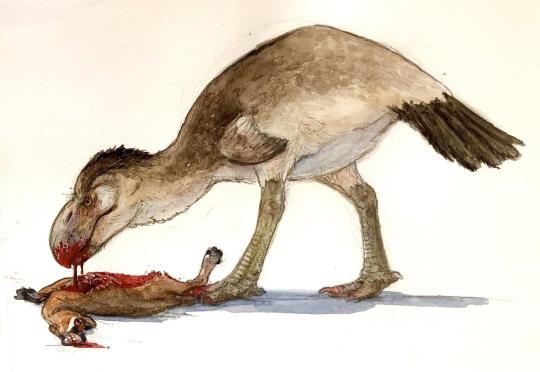
By Ripley Cook
Other: Titanis is one of the largest known Terror Birds, and one of the largest known ones discovered early in our understanding of Terror Birds. In fact, we knew about Titanis so early on that there are a lot of old depictions of it - including ones where it has… hands. Clawed hands. That is very much wrong and cringy, but hey, there are pictures of it! Titanis is also fascinating because of its place in Earth’s History - it is one of the (only?) known Terror Birds from North America. This occurred due to the Great American Interchange, a sort of mini-columbian exchange where North America and South America combined, leading to the mixing of animals from both continents together. The traditional narrative says that Terror Birds went extinct because sabre-toothed cats came in from North America, but this is flawed for three very big reasons: 1) there were already Sabre Toothed animals filling that niche in South America, they were just Marsupials; 2) Terror Birds stuck around for a long time after the Interchange, and 3) Terror Birds reached North America in return! So Titanis helps to showcase that Terror Birds were doing just fine during this ecological exchange. So why did it - and other Terror Birds - go extinct? Probably the Ice Age, though for now, we can’t be sure. Regardless, they went extinct… probably before people got there. There are fossils that might be Titanis from 15,000 years ago, which would indicate they were still there when people got there. Which is terrifying. And also might point to humans being the cause of their extinction. Still, that seems unlikely, and they were definitely on the decline before then - so the Ice Age seems like the most logical explanation.
~ By Meig Dickson
Sources Under the Cut
Keep reading
471 notes
·
View notes
Photo


How you gonna loan something that doesn’t belong to you in the first place? Peak caucasity
33K notes
·
View notes
Photo
What a neat way to mount a sauropod!




At over 27 m length the skeleton of the specimen named Arapahoe is the largest original fossil on display in Europe
The enormous sauropod is possibly a new Diplodocus species
671 notes
·
View notes
Photo
The floof!

Originating from Japanese monster movies like Godzilla, the word “kaiju” is now often used to refer to giant creatures in general – and so it was only a matter of time before a huge sauropod dinosaur was named after the concept.
Kaijutitan maui* was a titanosaur living in Argentina during the Late Cretaceous, about 89-86 million years ago. It’s only known from fragmentary remains, so its full size is difficult to estimate, but it was probably somewhere in the region of 20m long (66’). Nowhere close to the largest sauropod, but possibly one of the heaviest since it does seem to have been rather chunkily built, with stout limbs and an estimated weight of 40-60 tonnes (44-66 US tons).
* Not named for the Polynesian hero, apparently, but for the initials of the Museo Argentino Urquiza.
———
Tumblr | Pillowfort | Twitter | Patreon
239 notes
·
View notes
Text
Why is literally every single reconstruction of sthenurines horrific. I can count the number of non-terrifying reconstructions I’ve seen on one hand.
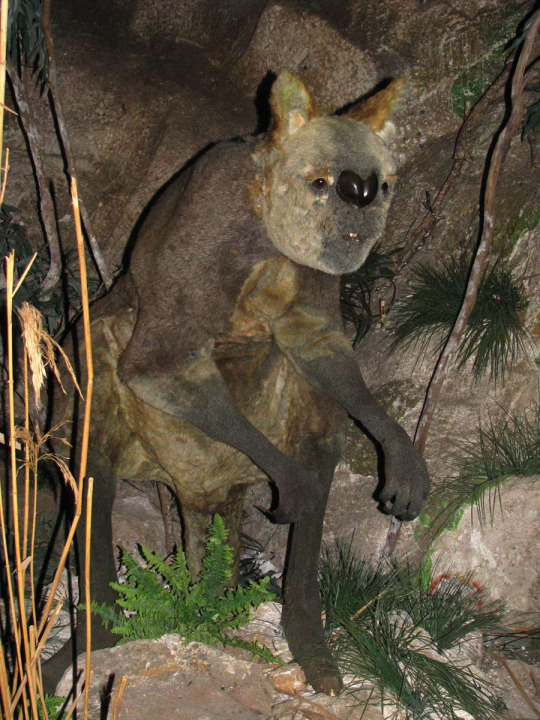
18K notes
·
View notes
Text

Gryposaurus! 8D With hands borrowed from Edmontosaurus, since I was recently informed about the mittens on this fossilized dinosaur mummy dubbed Dakota. After a quick search I think Gryposaurus was more closely related than the rest of the hadrosaurs from the dinosaur project thingy, so it got to be the one to wear them.
Hoofsies!
331 notes
·
View notes
Text
It’s especially egregious when the game Jurassic World Evolution heavily implies that all the animals in the park have 99% accurate genomes with just a handful of random add-ins. No amount of genetic tinkering gets you

from

(credit to Frontier and Emily Willoughby for the pictures)
People still using “but Dr Wu said the dinos wasn’t real!” to rebut criticism of JW’s inaccuracies, huh?
287 notes
·
View notes
